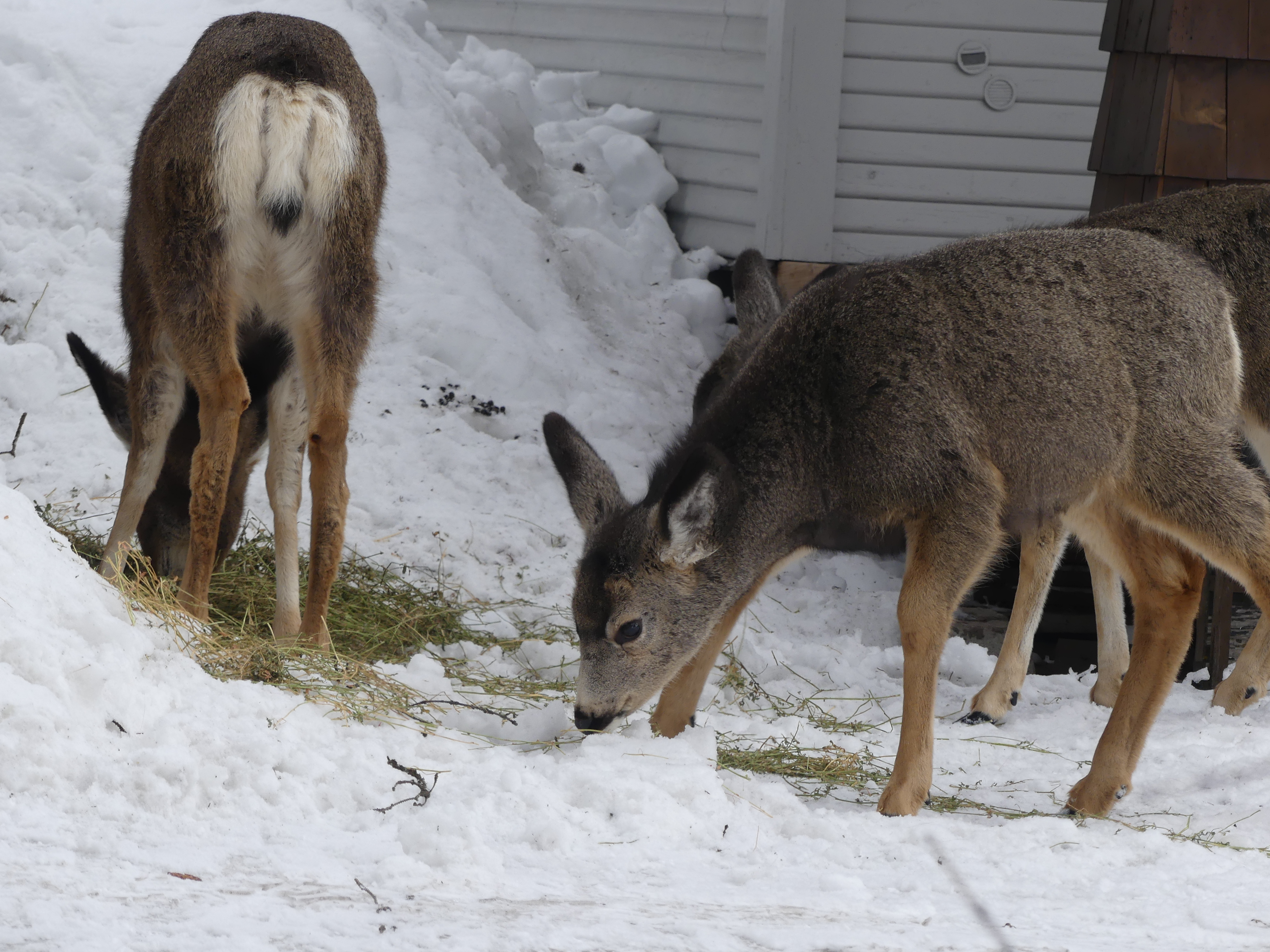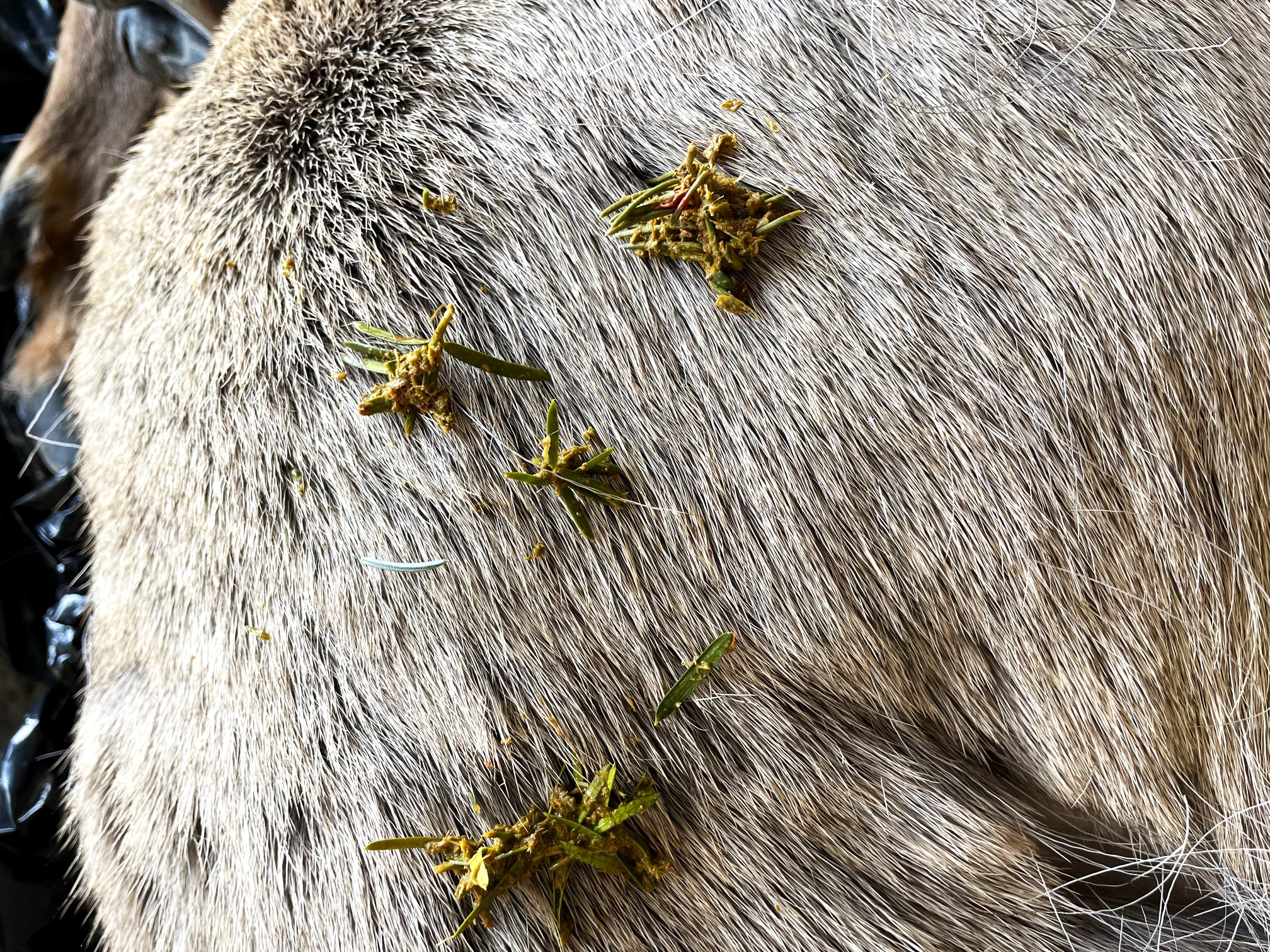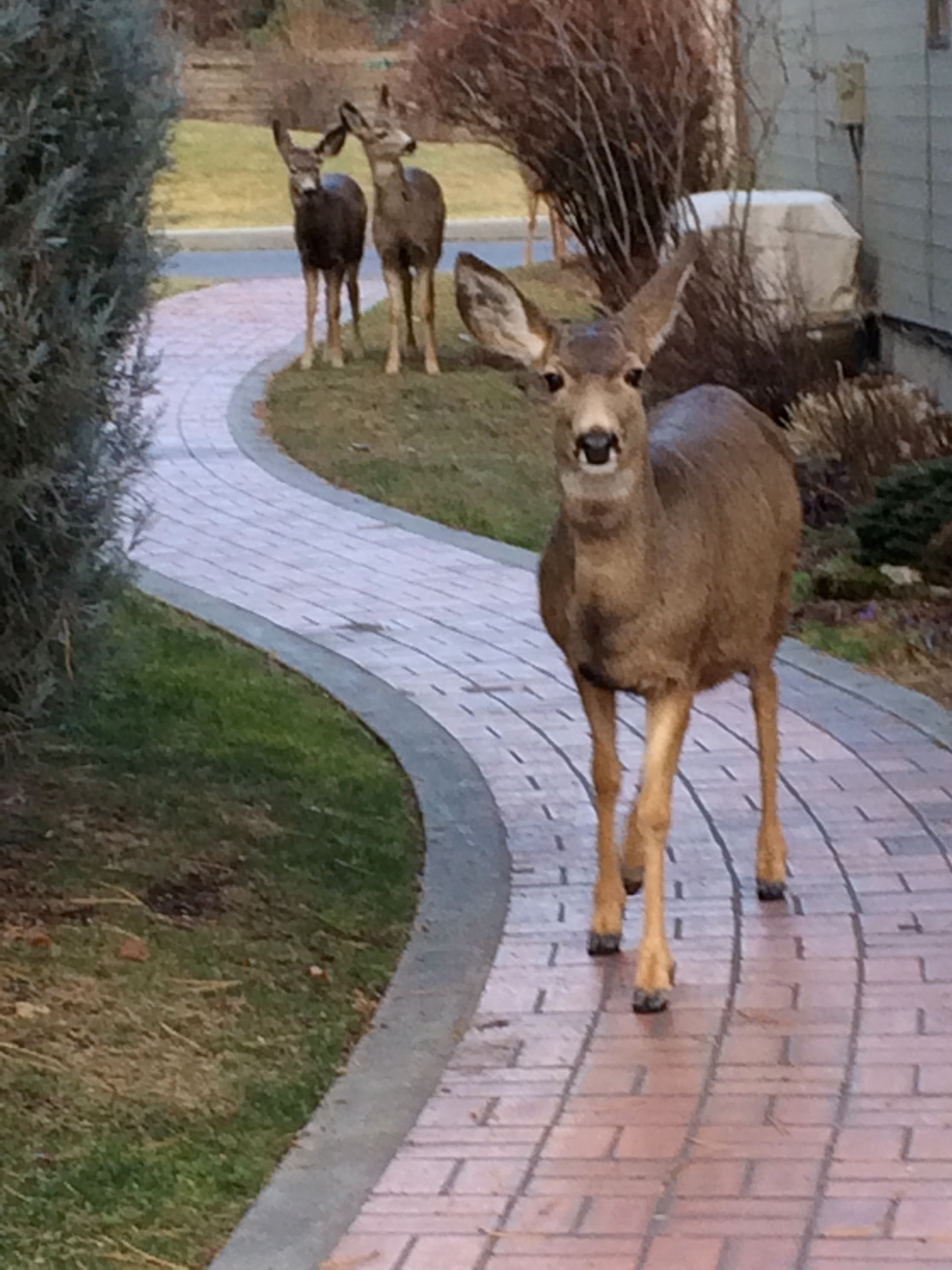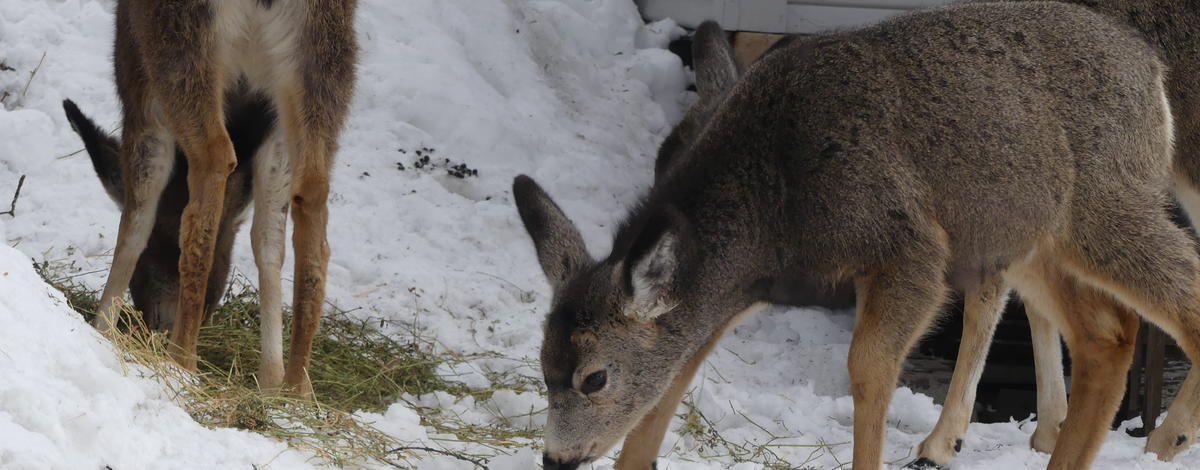Seeing a herd of deer outside your door or a head of elk may seem idyllic, and during winter they can almost seem tame. But truth is they’re wild animals that need to remain wild animals, and feeding them can quickly create a variety of problems.
Here’s how a simple well-meaning act can lead to a neighborhood-wide conflict.
The same, sad story
A neighbor has been leaving feed on their property all winter. The wintering deer catch wind of this 24-hour eatery and tell their out-of-town friends. The numbers grow, and pretty soon other wildlife, including coyotes and cougars, hear about this backyard buffet as well.
The deer and elk eat what’s available and start patrolling the neighborhoods for more readily-available grub, while predators start sourcing their own food – including household pets – as residential conflicts with humans increase.
Regardless of how cute and fuzzy those deer and elk look this time of year, please remember: They’re built for this environment. They do not need a tray of feed laid out in the backyard in order to survive the winter. They’ve done it for thousands of winters before, and they’ll do it again this winter.

Come one, come all
Folks usually have good intentions and are only trying to help. But feeding wildlife can actually do more harm than good.
Deer and elk can face health issues when well-intended, but ill-informed people choose to feed residential wildlife. Feed left out for one deer or elk can quickly lead to more. Large quantities of wildlife in small areas can increase the chances of diseases spreading among the population. Deer and elk digestive systems have adapted to different types of forage for different types of year. During winter, they’re adapted to digest dried, low-nutrient forage. Adding unnatural, rich food food to their diet can create serious digestive problems, bloat and even death.
Feeding deer and elk in neighborhoods can also attract them to deadly plants commonly used in landscaping, as was the case in January 2022 in the Wood River Valley. Despite Blaine County’s ordinance restricting the planting of these poisonous plants, five elk were found dead in residential areas after they consumed toxic yew plants. Two of those elk were calves. In 2015-16, the same noxious yew plant killed at least 20 elk in the same area.

As more deer and elk congregate in towns, the chances of vehicle collisions also increase. Deer and elk aren’t the best at reading crosswalk signs while they roam town searching for food sources. Hitting a large deer or even larger elk could ruin a person’s day, not to mention the animal’s day. Motorists should drive cautiously when they’re traveling through areas where wildlife may be present.
The impacts of social media
It’s a sad reality, but staging wildlife photos and videos is becoming more and more of an online trend, and is a selfish and surefire way to jeopardize wildlife health. There is a subgenre of social media where careless people intentionally lure in wildlife with food such as apples or carrots and take a selfie with the critter while it munches. Photos and videos can go viral, inflating a person’s ego enough to do it again for even more social media engagement.
Pretty soon the animal becomes use to being fed and repeatedly returns expecting another handout. Maybe it even earns a cute nickname among social media fans. But encouraging this kind of behavior ultimately spells trouble for the wildlife. An animal that’s lost its sense of fear towards humans can create a whole web of problems for people, their pets and, sadly, the animal itself.
Relocation can sometimes be the best-case scenario, but in certain cases, euthanizing the animal can sadly be the only solution if the animal ends up harming a person or pet.

Issues all across the state
In 2017, residents in Pocatello were experiencing problems with wildlife feeding due to a growing number of urbanized deer and turkeys.
Concerned Pocatello residents formed an Urban Wildlife Task Force to address some of the challenges presented by urban wildlife. One of the tools they brought forward prompted the City of Pocatello to ban local wildlife feeding in 2020. Though feeding squirrels and most birds is still allowed, a City of Pocatello ordinance prohibits the feeding of all other wildlife within city limits, including deer, turkeys, and waterfowl.
The story isn’t much different further north in the Panhandle. In the Coeur d’Alene area, the sight of white-tailed deer, turkey and moose meandering through town is commonplace.
Knock on just about any door and you’ll hear stories of wildlife decimating freshly planted ornamental landscaping or devouring the entire crop from a garden. This not only attracts unwelcome wildlife, it often creates conflicts between neighbors who don’t want their expensive landscaping or hard-earned fruits and vegetables turned into deer food.
Although wildlife are naturally plentiful in the Panhandle, there is no shortage of residents feeding them, particularly during the winter months. In response, nearly all towns in the Coeur d’Alene area have passed feeding ordinances to prohibit the feeding of wildlife in city limits.
A few towns have resorted to other alternatives to deal with the destructive influx of hooved, feathery and hairy residents. In recent years, the City of Hayden Lake has pursued trapping and euthanizing resident white-tailed deer in town.

Emergency situations
In very rare cases, Fish and Game managers will supplement a deer or elk's diet with winter feed in emergency situations. Extreme winters can sometimes cause winter forage to become limited or unavailable, sometimes for prolonged periods of time.
Fish and Game will also feed wintering deer and elk on an emergency basis in order to prevent conflicts between big game and agricultural operations, as well as a means of luring big game herds away from congested freeways or onramps.
However instances such as these are uncommon. Most winters, snow depths and temperatures do not pose a threat to big game herds.
Moral of the story
If you wish to help wintering wildlife this year, rather than feeding, take out your binoculars and observe them from a distance. Appreciate the fact that you live in a place that provides deer and elk a suitable habitat during certain parts of the year. You will do more good for the deer and elk by not feeding them.

